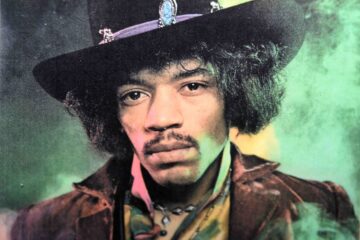By the mid-1970s, John Lennon needed to move beyond his role as a pop songwriter. He had already started making bold strides as a political celebrity, and no amount of ridicule and potential legal action from the FBI was going to stop him from speaking his mind whenever he had a microphone in front of his face. So when he made an album all about political screeds, it should have been a great record, but what we ended up with was one of the messiest albums ever put together by a former Beatle.
That’s not to say that Some Time in New York City is terrible from back to front. An album can still have a lot of good moments and still be a mess, and when looking through a lot of the tunes, it was bound to be a little bit lopsided once it was decided that Yoko Ono would be performing on half of the tracks.
But for everyone about to throw out insults about how Ono ruined the record, she actually walks away with some of the best production and a handful of great songs that should be celebrated right alongside Lennon’s material. It’s just a shame that we had to suffer through many half-written songs to actually hear them.
Despite some strange choices, there are pieces of the mammoth double record that are at least salvageable if given proper care and attention. So when combing through Some Time in New York City, we’re going to be looking for two major factors that brought about its demise: what led to them making something so ramshackle and how they could have gone in different directions to make it more balanced.
What makes Some Time in New York City such a mess?
The idea of a political record from John Lennon sounds like it should be flawless from start to finish, right? After all, tracks like Give Peace a Chance and Revolution seemed like the perfect foundation for such a project. However, by aligning himself with the Elephant’s Memory backing group and including half-finished tracks, the resulting studio album ended up being a mixed bag, containing some of Lennon’s best and worst songs from that period.
But let’s get through the positives first, starting with ‘New York City’. Easily the best tune from the project, Lennon is in fine form, and his ode to moving to the Big Apple is still as infectious as it was when it was released. And despite its questionable name, the album opener does have some of the most infectious horn lines on the project.
The main problem is Lennon’s decision to prioritise the politics over the music. Many bands have made great songs set against the backdrop of their political climate, but hearing him sing about ‘John Sinclair’ sounds more than a little bit forced, and while Ono’s ‘Born in a Prison’ has a sweet enough melody, she seems too focused on trying to get all the words out than concentrating on whether what she’s saying rolls off the tongue very well.
That’s before getting to the live album that accompanied it, which flip-flops between being an engaging live performance and one of the experimental albums that Lennon and Ono made together during The Beatles years. But with an album this scattershot, what are some ways that Lennon could have boosted the tracks to make them better?
What substitutions could be made?
When looking through the album, there’s a lot of sloganeering but not nearly enough melody to go around. Outside of standout tracks like ‘New York City’, there are more than a few times where things are either pushed to the side or deliberately neutered right before they get started. So, instead of beefing out the tracklist with more subpar songs, why not give a lot of the standalone singles from this time a home on here?
Since Lennon was already looking to go back to old-school rock and roll on ‘New York City’, it could be a good idea to throw in some of the tracks that he had been working on like ‘Rock and Roll People’ during the same time. These tunes were recorded during the sessions that would later bring us Rock ‘n’ Roll, but since they didn’t end up on the record, it would be a worthy inclusion on here.
And Since tracks like ‘Give Peace and Chance’ and ‘Power to the People’ never got their just due on a proper album, their themes of love and peace for the world and giving people political rights would be like a match made in heaven when paired next to more folksy songs like ‘The Luck of the Irish’.
While Lennon’s old writing partner was also working on an intended double album that he abandoned for Red Rose Speedway, perhaps ‘The Intellectual Beatle’ could have taken a step back and made a great single record with these new songs included and taking out a few of the tunes that don’t work. That way, Some Time in New York City could be an artistic reflection of both sides of Lennon’s personality: the rock and roller who wants to make entertaining music, and the political radical who wants to find the answers to all his big questions.



